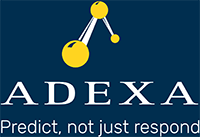Unless Supply Chain Plans are Accurate, then Why Bother?
Most companies choose their supply chain planning vendor based on how nice it looks but pay very little attention as to how good the quality of plans are. Not all planning systems are created equal. Yes, every planning company can produce a “plan.” But how good is that plan if you have to spend hours, if not days, to make changes just to make it good enough for execution. This is what almost all S&OP systems are like. They look great but when it comes to quality of the plan they fail miserably. There are two critical factors in plan quality: How optimal it is and how executable it is.
A plan maybe optimal, for example using linear programming techniques, however it may not take into account all the real constraints in the supply chain in a realistic way because of the deficiency of these mathematical techniques. Hence the plan is not executable.
On the other hand, you can have a plan which is “good enough” for execution but far from optimal because it under-utilizes resources and does not create optimal levels of inventory and prioritization of objectives. Furthermore, this low level of plan quality is not even apparent to the end users! How could they, if this is the only plan that they have? Some try to use what-if scenarios. However, this gives them only a handful of options amongst thousands of possibilities.
The bottom line is if your plans are not accurate enough then why bother? A spreadsheet can give you the same rough plan. In fact, most S&OP solutions plan the supply side using spreadsheet logic!
Accurate plans come from accurate models. Accurate models come from good data and the ability of the system to model the real world, i.e. the digital twin. In order to create the digital twin resulting in autonomous planning, S&OE solutions are a must. According to Gartner, S&OE provides the path to stage 4 and 5 maturity of your supply chain.
Just patching a new system to S&OP may not help since you are now dealing with two separate data models, two separate planning logic and two separate systems and databases to maintain. This journey should be about an environment where you can evolve from S&OP to S&OE and beyond by simply adding more refined data and attributes. A unified data model allows you to do that without having two separate environments. This approach also removes the barriers, or the silos, between planning and execution. Simply refine the model and operations gradually and consistently to a digital and autonomous world of planning.

“Most S&OP solutions plan the supply side using spreadsheet logic!”
For more information on S&OP, S&OE and a unified data model click here.



